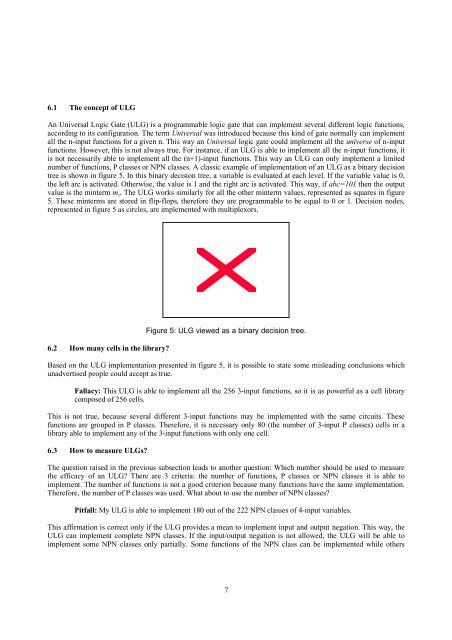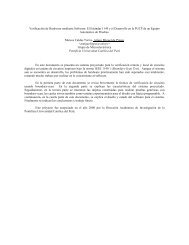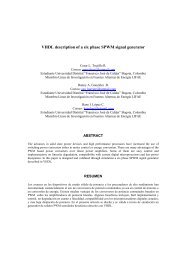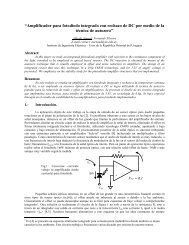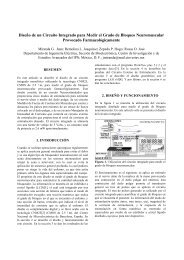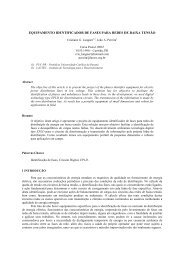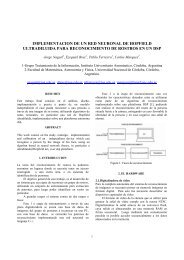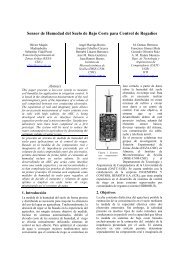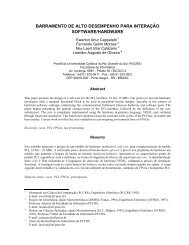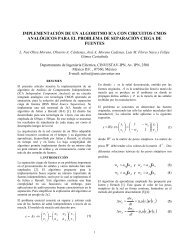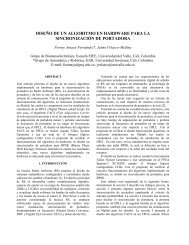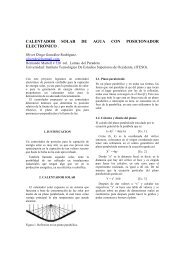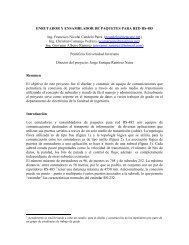Classifying n-Input Boolean Functions
Classifying n-Input Boolean Functions
Classifying n-Input Boolean Functions
Create successful ePaper yourself
Turn your PDF publications into a flip-book with our unique Google optimized e-Paper software.
6.1 The concept of ULG<br />
An Universal Logic Gate (ULG) is a programmable logic gate that can implement several different logic functions,<br />
according to its configuration. The term Universal was introduced because this kind of gate normally can implement<br />
all the n-input functions for a given n. This way an Universal logic gate could implement all the universe of n-input<br />
functions. However, this is not always true. For instance, if an ULG is able to implement all the n-input functions, it<br />
is not necessarily able to implement all the (n+1)-input functions. This way an ULG can only implement a limited<br />
number of functions, P classes or NPN classes. A classic example of implementation of an ULG as a binary decision<br />
tree is shown in figure 5. In this binary decision tree, a variable is evaluated at each level. If the variable value is 0,<br />
the left arc is activated. Otherwise, the value is 1 and the right arc is activated. This way, if abc=101 then the output<br />
value is the minterm m 5<br />
. The ULG works similarly for all the other minterm values, represented as squares in figure<br />
5. These minterms are stored in flip-flops, therefore they are programmable to be equal to 0 or 1. Decision nodes,<br />
represented in figure 5 as circles, are implemented with multiplexors.<br />
6.2 How many cells in the library?<br />
Figure 5: ULG viewed as a binary decision tree.<br />
Based on the ULG implementation presented in figure 5, it is possible to state some misleading conclusions which<br />
unadvertised people could accept as true.<br />
Fallacy: This ULG is able to implement all the 256 3-input functions, so it is as powerful as a cell library<br />
composed of 256 cells.<br />
This is not true, because several different 3-input functions may be implemented with the same circuits. These<br />
functions are grouped in P classes. Therefore, it is necessary only 80 (the number of 3-input P classes) cells in a<br />
library able to implement any of the 3-input functions with only one cell.<br />
6.3 How to measure ULGs?<br />
The question raised in the previous subsection leads to another question: Which number should be used to measure<br />
the efficacy of an ULG? There are 3 criteria: the number of functions, P classes or NPN classes it is able to<br />
implement. The number of functions is not a good criterion because many functions have the same implementation.<br />
Therefore, the number of P classes was used. What about to use the number of NPN classes?<br />
Pitfall: My ULG is able to implement 180 out of the 222 NPN classes of 4-input variables.<br />
This affirmation is correct only if the ULG provides a mean to implement input and output negation. This way, the<br />
ULG can implement complete NPN classes. If the input/output negation is not allowed, the ULG will be able to<br />
implement some NPN classes only partially. Some functions of the NPN class can be implemented while others<br />
7


